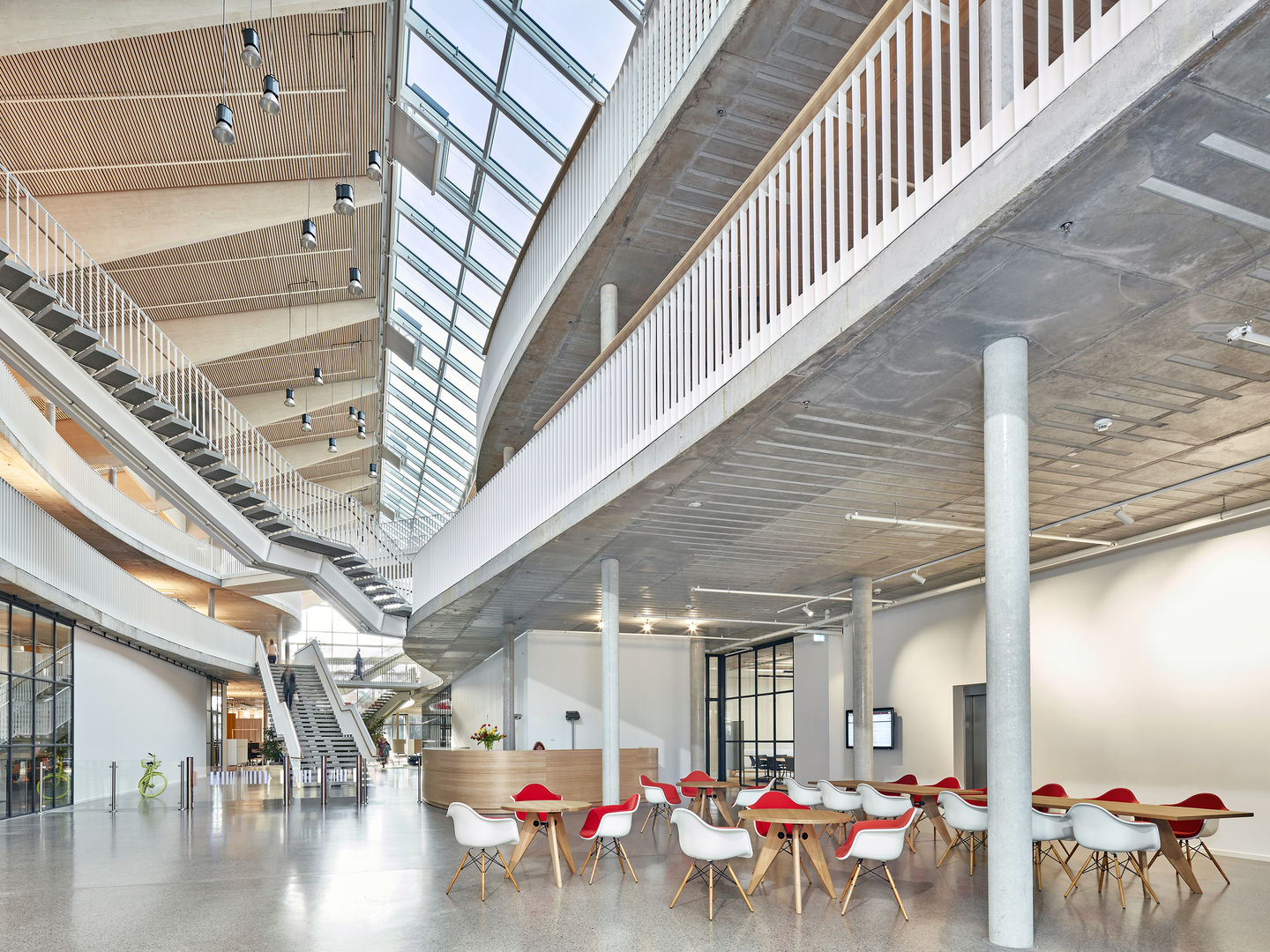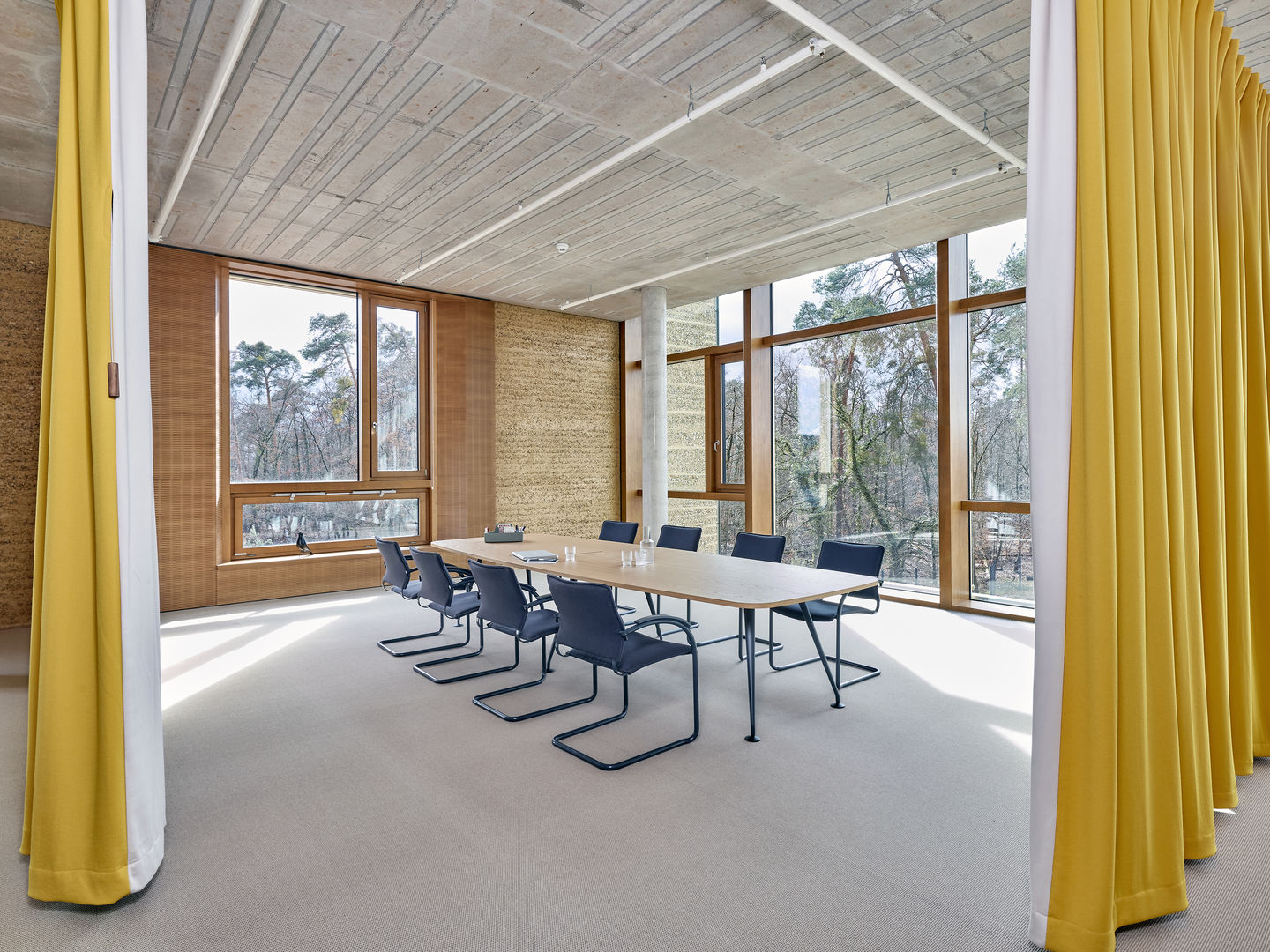„Working with one another, for one another!”
An Interview with Prof. Dr. Götz Rehn

For the Vitra Summit, we have invited leaders from business, architecture, design or psychology to reflect with us on how to future-proof our environments. Prof. Dr. Götz Rehn is one of them.
It’s like a village, says Prof. Dr. Götz Rehn about the new headquarters of Alnatura, the company he founded more than thirty-five years ago – a workspace village. The archetypal clay building with its open-plan interior, called «Alnatura Arbeitswelt»,reflects the company’s goal of actively implementing sustainability in all its dimensions. In a conversation with Vitra Magazine, Rehn talks about participatory design and how the Covid-19 pandemic has affected the working world.
It’s like a village, says Prof. Dr. Götz Rehn about the new headquarters of Alnatura, the company he founded more than thirty-five years ago – a workspace village. The archetypal clay building with its open-plan interior, called «Alnatura Arbeitswelt»,reflects the company’s goal of actively implementing sustainability in all its dimensions. In a conversation with Vitra Magazine, Rehn talks about participatory design and how the Covid-19 pandemic has affected the working world.
Alnatura employs 3,500 staff, your products are on sale in more than 135 Alnatura stores. At some point the old headquarters were too small for the expanding business, whose office spaces were scattered among numerous locations. What was your top priority when you decided to build a new campus from scratch?
The top priority with the new office building was implementing our sustainability concept. We wanted a building that made sense in terms of both economy and ecology – one that supports the way we work together. That’s the essential question: how does one create an office space that is aesthetically pleasing and functionally collaborative? We’ve always considered the Alnatura campus’s outside areas as an important part of our workspace as well. Today we have the «tibits» vegetarian restaurant, a Rudolf Steiner kindergarten for up to one hundred children, garden allotments for employees and local residents to practise organic gardening, a summerhouse for seminars, an oven for baking bread, and an amphitheatre for stage performances, since all our learners take part in acting workshops.Working together is a central theme, then. What does that actually look like?
Our internal collaboration is guided by a concept we are constantly re-evaluating. We call it «working together in a spirit of fellowship». The basic idea is this: nowadays people want to make a contribution to the community and at the same time continue to develop their personality and skills. But the necessity to implement marketable ideas swiftly and pragmatically is increasing. This is something you cannot manage on your own; you need to collaborate to achieve something. So we asked ourselves: how can we make sure that all those affected by the company’s decisions have an opportunity to contribute to the decision-making process?One tool we developed in this context is an advisory principle. When you as an employee are confronted with a task, the first thing you do is ask what it’s about and who can assist you. In the next phase, the team gathers facts, dates, and figures. The third phase is about discussing possible courses of action. In the fourth phase the team makes its decision. This four-phase model enables us to work together freely and openly, unconstrained by hierarchy but without falling into a laissez-faire attitude where people only do what they want and ignore the bigger picture. In short, it’s about working with one another, for one another!

How does the new workspace reflect your company culture, and what would you advise for companies planning to tackle a similar project?
Creating a workspace is a very personal project. The best advice I can give anyone planning to create a new workspace is this: don’t just buy a ready-made concept, but develop your own concept in collaboration with your employees. In our case that meant forming a group, the Change Group, which brought up a number of important questions: How do we work together today? Where are the links? Who is working with which department? Which departments are there? What future developments can we expect? Where would we like to sit? What do we need? The basic premises are different for every company, and that shouldn’t be underestimated. In the end we implemented the «Citizen Office» concept. To illustrate that, you could say that we developed our own Alnatura workspace village. Where a village has houses, a church and a greengrocer, the Alnatura campus has meeting areas and team rooms. We developed the plans for this village in collaboration with external consultants. In the end we created more than 13,000 square metres of workspace with hardly any doors – it’s a big village.
Earlier you described your mode of working together at Alnatura. Were there any surprises in the planning process?
Let me give you an example. When we were thinking about the ground-floor meeting rooms where we receive guests and meet with suppliers and other partners, the Change Group found out that we’d need far more space than originally earmarked. Naturally that led to discussions, but in the end we said we’ll go with what our staff decided, because they know what we need. It turned out that the space provided for meetings is just large enough. That goes to show how important it is, when planning new workspaces, to engage in a process involving the people who are going to be working there – to make sure that it originates and develops from within the company.

For your office furniture you went to Vitra – or back to Vitra, rather, since this wasn’t the first time you used their products.
Following the motto «Good for People and for Earth», our company strives for sustainability in all its dimensions. That includes an economical approach to furniture. Be it for our stores or for our office spaces, we want furniture that lasts and that can be repaired if it ever does break. Around twenty-five years ago we had to buy new office furniture, but at that time the company wasn’t doing so well. All the same, we bought the Vitra office chairs because we knew the quality is excellent. Now they’re twenty-five years old and they’ve never given us any trouble. We’ve had them refurbished and will be able to use them for another twenty years. That’s what convinced us: premium quality. The other point was aesthetics. For us it’s important to work with a partner who understands that we want to make the world a more attractive place. It’s not just about utility.
The Corona pandemic hit us all unexpectedly. What was it like in your company?
The greatest challenge was in our 135 stores, not just because there was a sudden upturn in demand for organic food, but also because we had to implement the new hygienic and protective measures. At headquarters we formed a Pandemic Group right on the first day. It cuts across all hierarchies and makes decisions relating to the pandemic on a purely functional basis. The group started out meeting every day, now its meets every week. They set up rules of behaviour for the staff in these extraordinary times.Normally there are around 470 people working at headquarters, at the moment the maximum number is 140. We considered very carefully what to do if we have a case of infection and developed processes for dealing with the situation to ensure that we remain operational. But beyond these questions, the Corona pandemic has also promoted new ways of working together freely and openly. This is something we want to support, too. At the moment we are developing new regulations for mobile working. In the long run, the number of employees working from home will increase.
Publication date: 14.10.2020
Images: © Alnatura, Annika List, Lars Gruber; Vitra
Video: Marek Iwicki & Lukas Schmid


